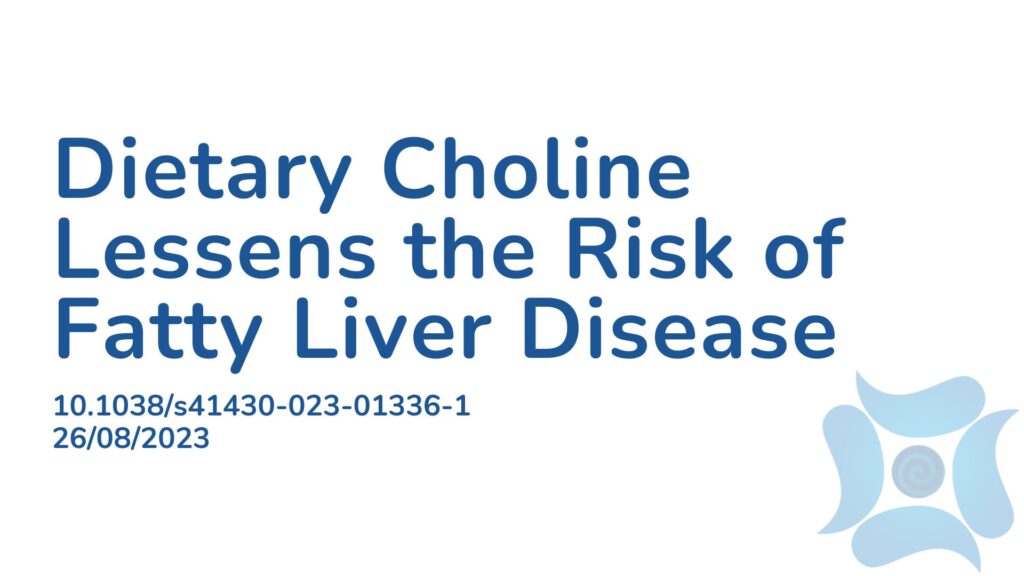Summary:
This paper aimed to assess the relationship between dietary choline and the pathogenesis of non-alcoholic fatty liver disease (NAFLD), as there is currently no conclusive evidence on this topic. The authors obtained data from the 2017-2018 National Health and Nutrition Examination Survey in America. Choline intake was determined based on dietary recall questionnairess. Liver damage was then assessed using medical technology. The results showed that sufficient dietary choline intake was associated with a decreased risk of NAFLD when compared to inadequate choline intake levels. The results also showed that the higher the choline intake, the lesser the risk of NAFLD in both men and women. The findings conclude that increased dietary choline intake is associated with a decreased risk of NAFLD in American adults, with this relationship holding true for both females and males. Whole eggs, organ meats, fish, mushrooms, soy, wheat, and cruciferous vegetables are all good sources of dietary choline.
Abstract:
Background: Whether there is an association between dietary choline intake and non-alcoholic fatty liver disease (NAFLD) in American adults remains unclear. Methods: Data came from the National Health and Nutrition Examination Survey 2017–2018. Choline intake was defined by the mean amounts of two 24 h dietary recalls, and choline intake was categorized into three groups according to the quartiles: inadequate (<P25), average (P25–P75), and optimal (>P75). Hepatic steatosis was assessed with FibroScan®, in which VCTE was employed with controlled attenuation to derive the controlled attenuation parameter (CAP), and NAFLD was defined as a CAP score ≥285 dB/m. Multivariable linear regression was performed to assess the linear relationship between choline intake and CAP. Multivariable logistics regression models were conducted to assess the association between choline intake status and NAFLD in the final sample and subgroup analysis was then performed in men and women. Results: The amount of dietary choline was inversely associated with CAP score (β = −0.262, 95% CI: −0.280, −0.245). Compared to inadequate choline intake, optimal choline intake was related to a lower risk of NAFLD (OR: 0.705, 95% CI: 0.704–0.706) in the final sample. Subgroup analysis by gender revealed that the highest choline intake status was associated with a lower risk of NAFLD both in females (OR: 0.764, 95% CI: 0.762–0.766), and males (OR: 0.955, 95% CI: 0.953–0.958) when compared to the lowest choline intake. Conclusions: With the latest NHANES data, we found that higher dietary choline was associated with a lower risk of NAFLD in American adults, and such a relationship exists in both females and males.
Article Publication Date: 26/08/2023
DOI: 10.1038/s41430-023-01336-1




